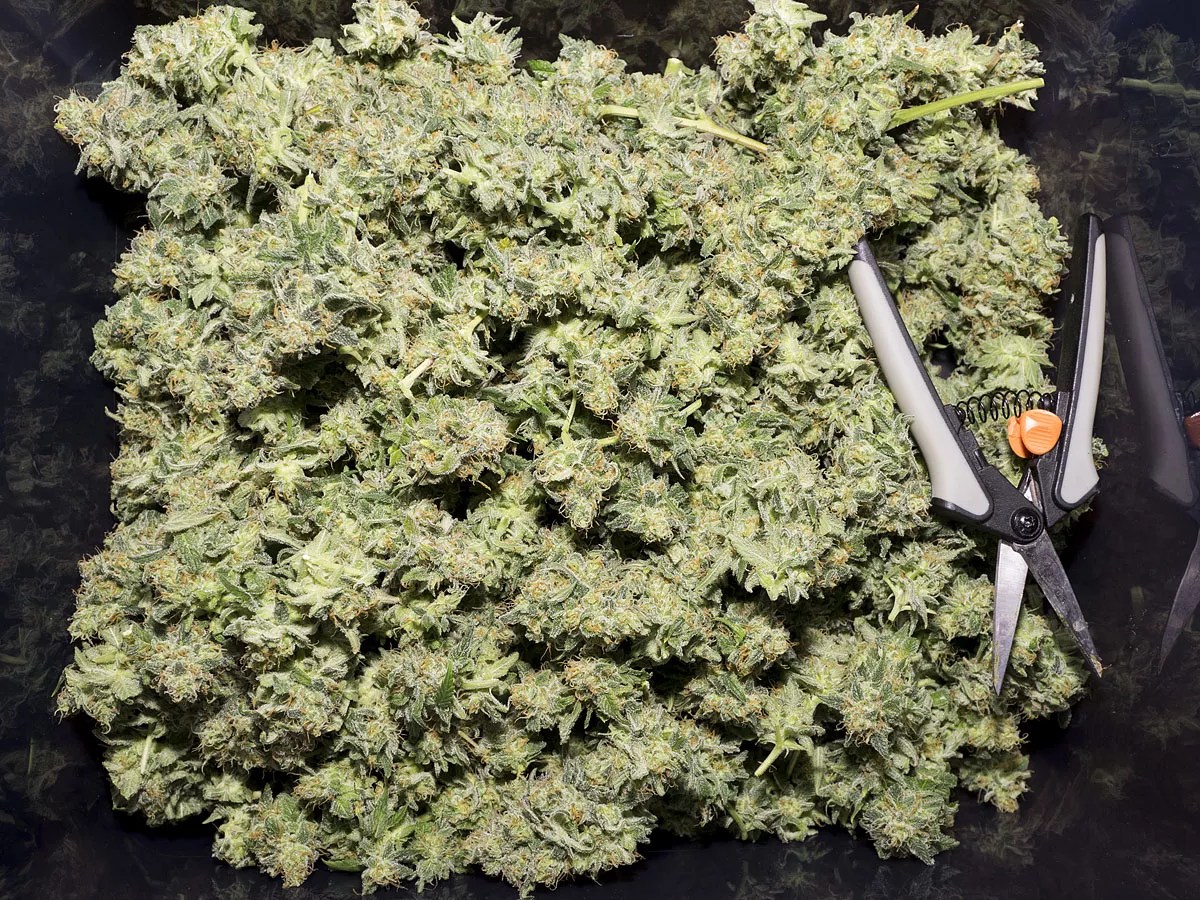
goobafish/shutterstock.com

Audio By Carbonatix
Medical-marijuana patients in Arizona smoked, vaped, dabbed, ate, or otherwise consumed a record 61 tons of cannabis products in 2018, state records show.
The state Department of Health Services published its annual end-of-the-year report on Monday, January 14, and as usual it’s got a shit-ton of interesting data for anyone interested in Arizona’s experience with state-legal weed.
One of the first numbers from our calculator that caught our eye: Arizona dispensaries sold 2.5 tons of edibles alone last year. That happens to be the total amount of all medical-marijuana products sold in Arizona dispensaries in 2012, the first full year of their existence. You’ve come a long way, patients.
There were only about 40,000 patients in 2012. Last month, the state listed more than 186,000 patients as active cardholders, which is a 22 percent increase over the December 2017 total.
This year, make your gift count –
Invest in local news that matters.
Our work is funded by readers like you who make voluntary gifts because they value our work and want to see it continue. Make a contribution today to help us reach our $30,000 goal!
Another 852 caregivers and 5,449 registered dispensary agents in December 2018 means that, as of last month, 192,303 people in Arizona were protected from the state’s felony anti-marijuana laws. The 2010 Arizona Medical Marijuana Act allows qualified patients to possess up to 2.5 ounces at a time, and buy up to 2.5 ounces every two weeks. About 130 dispensaries are spread out across the state.
The latest report shows that patients bought about 56 tons of flower (a.k.a. buds) from dispensaries in 2018, the aforementioned 2.5 tons of edibles, and slightly more than 2.5 tons of “marijuana other,” which includes resin extracts like shatter or the THC oil in vape cartridges, and also products like topicals or time-release patches.
Last year’s total tonnage constitutes a 42 percent increase over the 2017 total of 43 tons of sold cannabis products. About 34 percent more edibles were sold in 2018 than the previous year, but the pace of sales for resin extracts rose even faster, with 83 percent more such products sold.
Especially notable: The big increase of sales of concentrates took place despite a 2-1 Arizona Court of Appeals ruling that such products were not covered by the protections of the 2010 law. Dispensaries and patients ignored the June ruling, and continued to sell, buy, or consume the products through 2018 while waiting for the Arizona Supreme Court to make a final decision. The court announced just last week that it would review the appellate decision. If the court upholds that decision, next year’s “marijuana other” sales category will be considerably lower.
The demographics of 2018 patients were remarkably similar to those of 2017, the year-to-date report shows. For instance, the 18-30 group comprised 26.57 percent of all patients in 2017, and 26.08 percent of patients last year. Records show a slight rise in the number of patients who are younger than 18, and in the 71-80 group. The program became a tad more female last year, with women rising to 40.02 percent of patients in 2018, compared to 38.35 percent in 2017. Nearly 88 percent of all patients list “chronic pain” as their qualifying ailment.
“The overall ability to support the market is strong,” said Keven DeMenna, who lobbies on behalf of the Arizona Dispensaries Association. “Private equity continues to flow into this market,” he added, noting recent deals in the news like MedMen of California, which opened its first store in Arizona last month.
“It’s a very strong market with more potential,” he said.
DeMenna said he expects to see continued strong growth in Arizona’s medical-marijuana industry in 2019, depending on the upcoming court decision on extracts. New legislation this year that might help the industry with new regulations on testing for contaminants or lower card fees are probably not on tap, he said. Even if something got passed this session, a new law wouldn’t come online until July of 2020 – just as a likely adult-use ballot measure is being floated that could rewrite all the rules.
There’s one last interesting factoid to relate regarding the latest pot-sales figures in Arizona: The state’s purchased supply of legal medical marijuana may be getting close to the total demand for marijuana in Arizona. What that demand is among the state’s 7 million residents, no one knows. But in 2014, bean counters for the state Legislature estimated the state’s yearly demand at about 81 tons, which is only 33 percent higher than the 61 tons sold in Arizona’s legal dispensaries last year.
The Joint Legislative Budget Committee probably underestimated the state’s total demand back then, but it’s clear that legal marijuana has taken a significant chunk out of black market profits.
Below are the December and year-end reports: